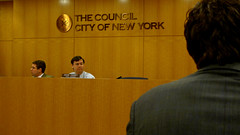Question by T-Bone : Is the threat of “Taxing” a business that moves jobs out of America like kicking a person out the door? Like business thinking of moving overseas is going to stay in America and pay more taxes, what say you?
More resources at Bookkeeping Services of Charlotte, NC
Best answer:
Answer by kirkill
That’s the Democrat Liberals way of building bridges to the international community! On EVERY issue they try to have it both ways. It’s truly a mental disorder.
This article was published at Bookkeeping Services of Charlotte, NC What do you think? Answer below!
Small Business Tax Tips – How To Find Hundreds Of Deductions
Read more articles at Bookkeeping Services of Charlotte, NC
Are you a small business owner who\’s frustrated about taxes? You face a mind-boggling array of choices when it comes to figuring out what is and is not deductible on your income tax return each year. And just when you think you\’ve got this tax system figured out, new laws are passed and it feels like you\’ve got to start all over. Perhaps the best place to begin this journey is the income tax return itself. Depending on what type of entity you own, here are the main income tax forms: Schedule C (sole proprietorship), Form 1065 (partnership), Form 1120 (C corporation), and Form 1120S (S Corporation). Note: If you own a limited liability company (LLC), you\’ll use one of those four forms, depending on how you choose to be treated for tax purposes. These tax forms are an excellent way to begin the process of answering the question: What\’s deductible? Notice that on each of these forms, there may only be 15 or 20 specific expense categories, or line items, to help you know what to deduct. For example, on Schedule C, starting with line 8, you have advertising, car and truck expenses, commissions and fees, depreciation and section 179 expense, and so forth. This list continues to line 26, wages. And that\’s it. Only 19 expense categories. Are those the only 19 deductions you can take for your sole proprietorship? Or how about Form 1120S. The expense section starts with line 7, compensation of officers, and continues on to line 18, employee benefit programs. And again, that\’s it. Only 12 expense categories. Obviously there must be more than 12 deductions you can write off for your S corporation. So if you\’re thinking, \”These tax forms give me only a handful of deductions to identify, but fall short of providing a comprehensive list\”, you are correct. So what do you do now? All the above-listed business income tax returns include a line called \”Other expenses\” or \”Other deductions\”. On Schedule C, it\’s line 27. On Form 1120S, it\’s line 19. On Form 1120, it\’s line 26. And on Form 1065, it\’s line 20. This is where you get to report all the other deductions that are not specifically mentioned on the previous lines. You simply attach a separate statement that itemizes the remaining business deductions. Then add up all those other deductions and transfer the total from the attached list to the main part of the tax return. This \”other deductions\” list can be as long as you need it to be. There are dozens (even hundreds) of legitimate deductions for your business that the IRS didn\’t think necessary to include on the main page of the tax return. And now it\’s up to you to find out what they are. There are plenty of good resources to help you compile that list of bona fide deductions. The IRS website has many free publications that explain deductions, depending on your entity: Publication 334 (sole proprietorship), Publication 542 (C corporation), Publication 541 (partnership). For S corporations, there is no separate publication, so start with the Form 1120S instructions. Admittedly, IRS publications are not known for readability or comprehensiveness. So if you are serious about finding out what you can deduct, do yourself a favor and spend or on a few well-written books about small business tax deductions. Here are three of my favorites: \”422 Tax Deductions for Businesses & Self-Employed Individuals\” by Bernard B. Kamoroff, \”Small Business Taxes Made Easy: Increase Your Deductions, Reduce What You Owe, and Boost Your Profits\” by Eva Rosenberg, and \”Lower Your Taxes Big Time\” by Sandy Botkin.
This article was published at Bookkeeping Services of Charlotte, NC
More Business Taxes Articles







